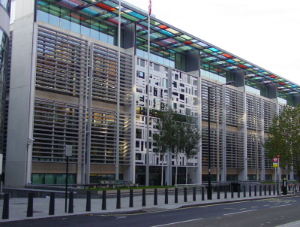Updated Home Office guidance indicates remote right to work checks will become permanent option in future
The Home Office confirmed last week that the temporary Covid-19 adjustments allowing remote right to work checks have been extended until 5 April 2022. The temporary adjustments were introduced last March due to the pandemic and they had been scheduled to end on Tuesday, 31 August.
 Image credit: UK GovernmentOn Tuesday, the Home Office released updated 55-page supporting guidance for employers, which is available here. As well as confirming the extension, the Home Office also indicated that digital right to work checks will become a permanent option after next April.
Image credit: UK GovernmentOn Tuesday, the Home Office released updated 55-page supporting guidance for employers, which is available here. As well as confirming the extension, the Home Office also indicated that digital right to work checks will become a permanent option after next April.
The updated Home Office guidance states:
"Following the positive feedback received on the ability to conduct right to work checks remotely, the Home Office initiated a review of the availability of specialist technology to support a system of digital right to work checks in the future. The intention is to introduce a long-term digital solution for many who are unable to use the Home Office online right to work checking service, including UK and Irish citizens. This will enable checks to continue to be conducted remotely but with enhanced security.
"As a result, and in recognition of moves to hybrid and alternative working models, temporary COVID-19 adjusted changes to the Right to Work Scheme, introduced on 30 March 2020, will remain in place until 5 April 2022 (inclusive)."
Information on how to carry out temporary adjusted checks is available here on GOV.UK.
The Home Office also confirmed that employers will not need to carry out retrospective checks on employees who had a Covid-19 adjusted check between 30 March 2020 and 5 April 2022.
In terms of other changes in the updated Home Office guidance, Kingsley Napley noted: "The main change concerns where an employer is recruiting someone who has applied late to the EU Settlement Scheme after 30 June 2021, there is clarification that two things need to be checked for right to work purposes before the employment can commence. Firstly digital or non-digital confirmation from the Home Office that the application has been submitted – this is known as a Certificate of Application. Secondly employers need to use the Employer Checking Service and receive a Positive Verification Notice confirming the person has the right to work."
Also of interest from the Home Office last week was a new sponsorship roadmap for the points-based immigration system.
You can read it online here.
It outlines the ambitious improvements planned to the sponsorship system over the coming years.
The Home Office explained: "As part of the points-based system, the Home Office is committed to delivering radical changes to the sponsorship process, making it easier for users to understand and navigate, and substantially reducing the time it takes to bring someone to the UK. As we modernise our immigration system, we will deliver a streamlined, simplified and modern sponsorship system that enables a more efficient operation, for users and the Home Office, and encourages compliance."
One of the key elements of the roadmap is the promise of a new sponsorship IT system. Delivering the new system will require "[a] great deal of complex technical work," though the roadmap envisages moving some employers to the new system by the middle of 2023 and having all licensed employers on the new system in 2024.
Kevin Foster MP, the Parliamentary Under-Secretary of State for the Home Department, said: "Our points-based system is delivering our pledge to attract the best and brightest to the UK while ensuring businesses focus on our domestic workforce. By making these significant changes to the sponsorship process, the UK will become global leaders in bringing talent to start work and study here faster than any other G20 country."